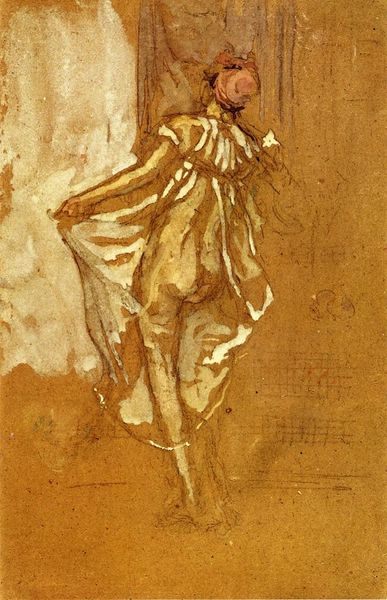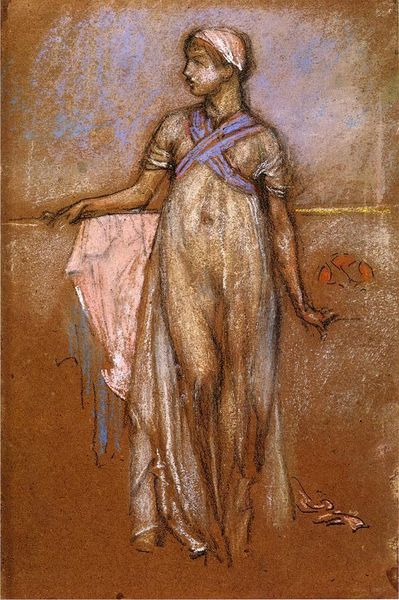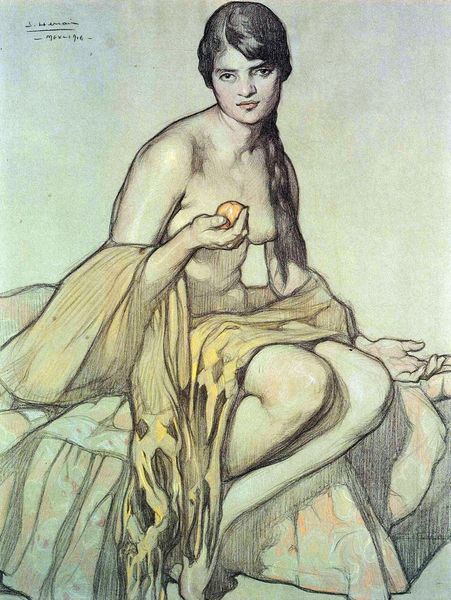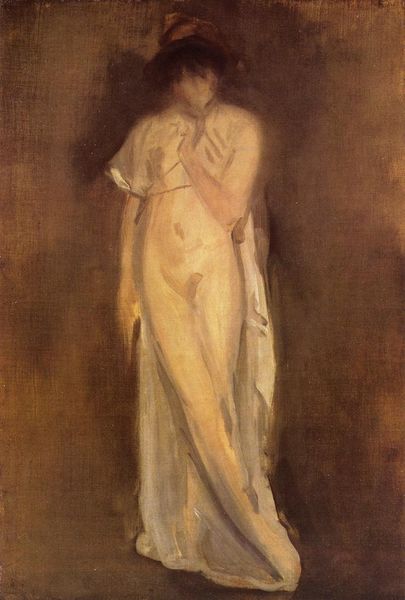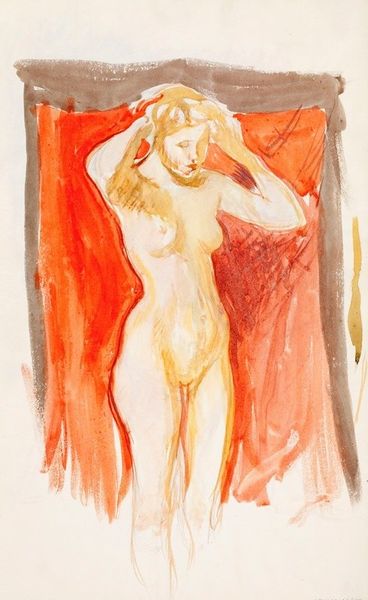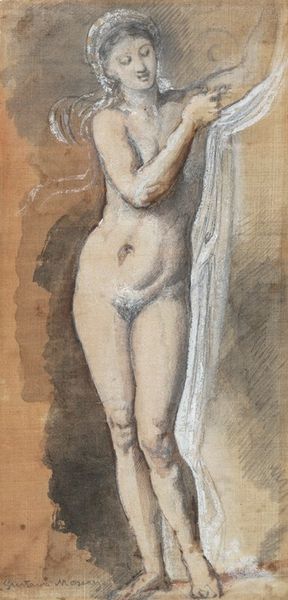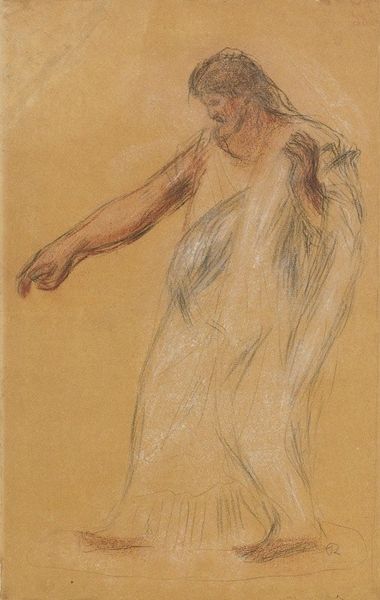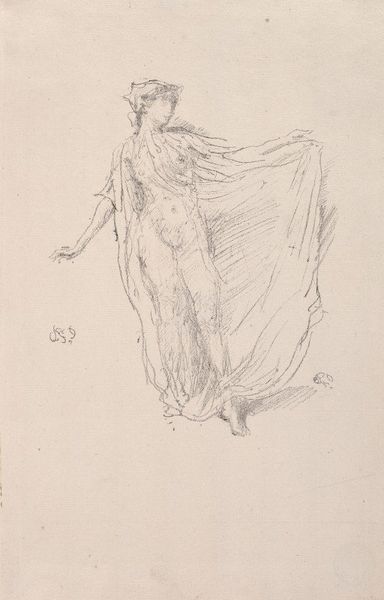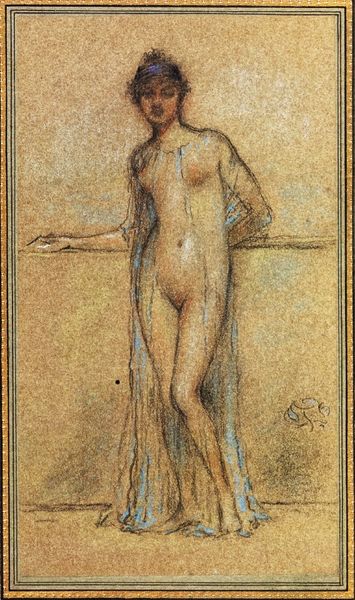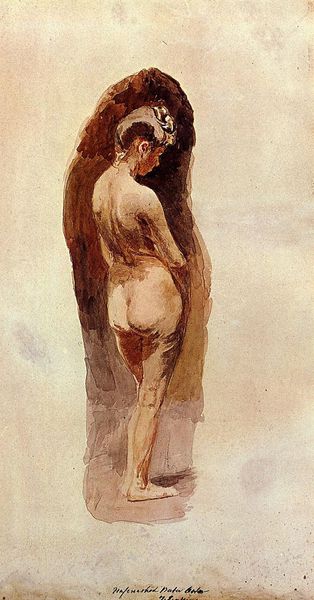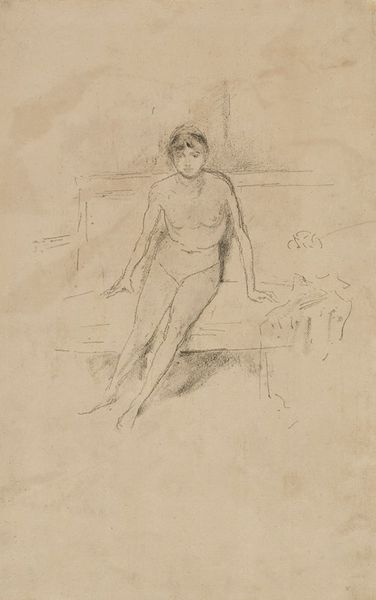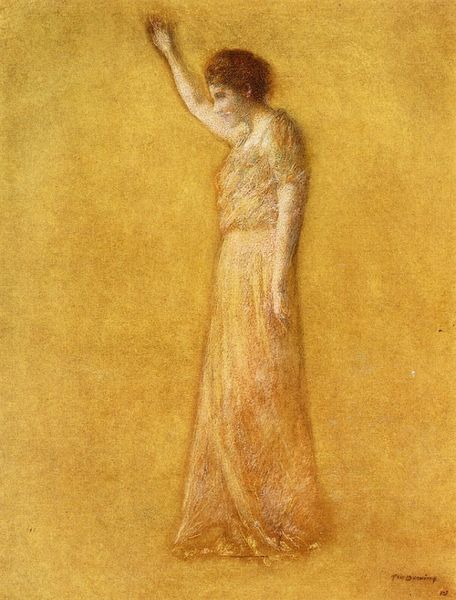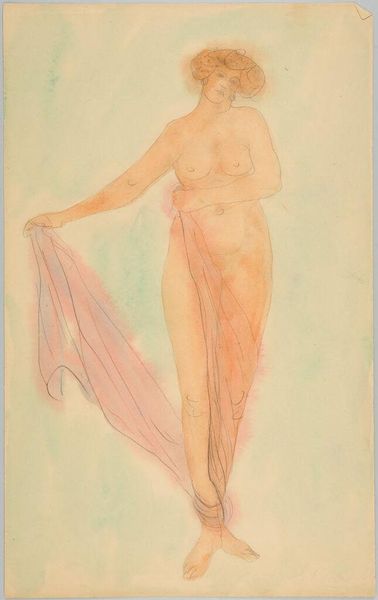
drawing, watercolor
#
portrait
#
drawing
#
impressionism
#
charcoal drawing
#
figuration
#
oil painting
#
watercolor
#
female-nude
#
pastel chalk drawing
#
human
#
nude
#
watercolor
Dimensions: 22.4 x 29.7 cm
Copyright: Public domain
Curator: What a whisper of a figure! It's there, then it almost isn't. Like a memory. Editor: Indeed. We're looking at James McNeill Whistler's "Dancing Girl," created around 1890. It's rendered in watercolor and gouache, lending it that ethereal quality. I'm struck by how daring Whistler was at the time, capturing such a raw, fleeting impression of the figure. Curator: Fleeting is the perfect word. It’s like she’s caught mid-motion, with this... what is it, a shawl, almost dissolving around her. The muted colors amplify that sense of transience. You feel it in your bones. She’s hardly "there." Is this figure actually nude? Why didn’t Whistler let us really SEE her? Editor: That sense of incompleteness is so characteristic of Impressionism generally, which Whistler, an American in Europe, flirted with and mastered. Rather than a precise anatomical study, Whistler focuses on the atmospheric effect, the way light dances on the form and surrounding fabric. And your point about seeing her raises critical issues around power: art history has primarily privileged the male gaze of mostly white males; however, I do believe that in Whistler's artistic approach we are provided more suggestive than the over determined visuality so often dominant in visual representation. I do think we need to question what sort of dance is portrayed. In any case, this emphasis removes her from that traditional patriarchal mode of viewing the unclothed body. The fact is that this choice does allow us as viewers some liberty. Curator: Ah, you think her relative spectrality does afford the figure, and thus us, freedom... Interesting. I still feel like something's being withheld, though that's just a vibe. Maybe that's the secret of its allure? Editor: I find this "dancing girl" both beautiful and provocative in her deliberate lack of clarity. Whistler refuses the traditional expectation of clear-cut depiction and instead presents an emotive enigma. Curator: So, she asks questions, rather than answering them. Maybe she isn’t nude in any of the “expected” ways. It could be argued it depends on who's looking...and what sort of assumptions they bring to the dance floor! I suppose we each fill in those blurry outlines with our own story. It has lingered in my imagination. Editor: A perfect note to end on, recognizing how much our perspectives shape what we perceive in art and perhaps more importantly, that our perceptions evolve!
Comments
No comments
Be the first to comment and join the conversation on the ultimate creative platform.

